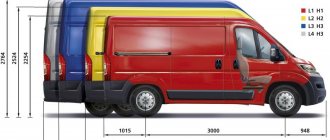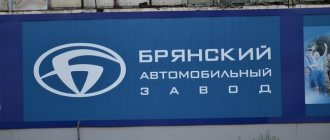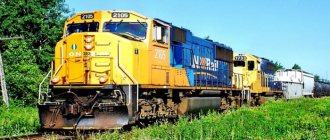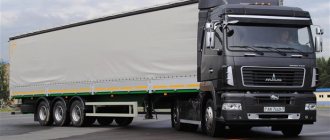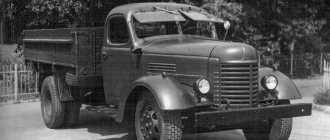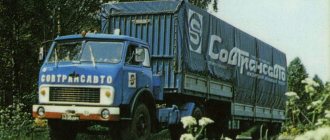When we hear the ZIL brand, we associate it with a big truck. However, the ZIL model range is represented not only by trucks. This includes cars, racing cars, even refrigerators. But everything is in order. First, let's look at the history of the development of this brand.
The photo shows the most common model ZIL 130
Fiat 15 Ter / AMO-F15 (1916-1931)
It all started in 1916 with the Italian Fiat 15 Ter, a truck with a payload of 1.5 tons, which began to be produced in Italy three years earlier. This truck was equipped with a four-cylinder engine with a displacement of 4.4 liters and a power of 35 hp. and a four-speed gearbox.
In 1917-1919, the plant assembled trucks from Italian vehicle kits. The result of this activity is 1,300 finished cars.
In the fall of 1924, the plant assembled several AMO-F15s (the same Fiat 15 Ter), which became considered to be the first Soviet cars.
On November 7, a convoy of 10 such vehicles marched in a parade along Red Square, and on November 25, three trucks set off from Red Square on the first test run for the Soviet automobile industry along the route: Moscow - Tver - Novgorod - Leningrad - Vitebsk - Smolensk - Moscow.
In March 1925, serial production of AMO-F-15 vehicles began. In 1925, 113 such machines were produced, and in 1926 - 342. By 1931, 6971 copies of the AMO-F-15 were made.
AMO-2 / AMO-3 / ZIS-5 (1930-1948)
The launch of the plant's second serial model, AMO-2, into mass production was the result of a major modernization and technical re-equipment of the enterprise carried out at the turn of the 20s/30s.
In 1930, the Soviet government purchased a license for the American Autocar-5S truck for production at the AMO plant. The truck, originally assembled from American vehicle kits, was named AMO-2. The car with a carrying capacity of 2.5 tons was equipped with a 4.9-liter inline six-cylinder engine with a power of 54 hp and a four-speed gearbox.
When production was localized and the first conveyor in the history of the USSR was launched (in 1931) and the conveyor was launched (the first in the USSR), it was renamed AMO-3. It was already a truck made entirely from domestic components.
Its engine power was increased to 72 hp. With. And in 1933, on its basis, the next main production model was made - the ZIS-5 truck, with a load capacity of 3 tons. But in fact it was still the same AMO-3.
In 1934, after the completion of a complete reconstruction of the enterprise (up to 100 thousand cars per year), this truck, which would become legendary in the future, went into mass production. Over sixty ZIS-5 trucks were produced per day. Based on this machine, 25 models and modifications were created, 19 of which also went into series.
ZIS-5, nicknamed “Zakhar” among drivers, was produced until 1948. More than half a million of these trucks were made. And together with those ZIS-5s that were produced in Ulyanovsk and Miass - about a million units. Compared to the base model, AMO-3, ZIS-5 had a payload capacity of 3000 kg, and its engine with a displacement of 5.6 liters already developed 73 hp.
Many modifications were also made based on the ZIS-5. These include gas generator and gas cylinder trucks, long-wheelbase versions of the ZIS-11 and ZIS-12.
First products
Industrial production of trucks was established by the beginning of 1925. These were one and a half ton AMO-F-1. Two years later, Ivan Alekseevich Likhachev was appointed director of the enterprise. The number of cars produced was constantly increasing, but the cost per unit of production was such that it was cheaper to purchase a truck abroad, even taking into account delivery.
For this reason, a large-scale reconstruction was started in 1931. In addition to replacing equipment in existing workshops, the plant area was significantly expanded and new production facilities were built. The enterprise was renamed “Plant named after Stalin”
The reconstruction made it possible to establish production of the ZiS-5 and ZiS-6, as well as the first domestic limousine, the ZiS-101, created by reverse engineering the Buick car.
ZIS-150 / ZIS-151 (1947-1958)
Back in 1937, the plant produced the first prototype of a new generation truck. Its load capacity was increased to 5000 kg (on the highway, on dirt roads - 3500 kg). The car featured an all-metal three-seater cabin, a 100-liter fuel tank, boosted to 82 hp. motor.
Before the war, they did not have time to put the ZIS-150 into mass production, so the new, modern truck at that time went into production only in 1947. And in the first years of production, it was still made with a wooden-metal cabin.
ZIS-150
From 1947 to 1957, the company produced more than 770 thousand ZIS-150 trucks. Its 5.6-liter engine developed power of 90 and then 95 hp.
On the ZIS-150 platform, a three-axle all-terrain truck ZIS-151 was built, with a 6x6 wheel arrangement. It became the first domestic mass-produced car with three drive axles.
ZIS-151
The ZIS-151 was widely used in the Soviet Army - as a chassis for mounting multiple launch rocket systems, tankers, mobile communications equipment, and so on.
Tests and testers
"5/25" means the fifth rank, the 25th rate. I think most people understand what the fifth category is, but just in case, let me remind you that in the Soviet system, the qualifications of working personnel were divided into 6 categories, where 1 was initial, 6 was the highest, more or less respected categories were considered no lower than 4. Since I was a certified specialist at that time, I was immediately assigned the fifth category, and three months later, after receiving permission for road tests, the sixth.
Now about the rates: the 25th tariff rate determined the amount of payment for mock-up work, test tasks on the territory of the enterprise, work in the climate chamber; The 27th rate was awarded for work on public roads and the highest 29th - tests with a risk to life, health and training with drivers of the GON - Special Purpose Garage.
Thus, the coolest test driver is the one who is “6/29,” which I became in the sixth month of work. In addition to the drivers, the bureau team consisted of management, leading engineers, research engineers and instrument technicians. In those years, the “old people” who stood at the origins began to leave. Some retired, and some younger ones found employment in representative offices of foreign companies or opened their own businesses, and the path to a quick career was open for young specialists at the plant, but the salary left much to be desired and was the main reason for the terrible turnover of personnel even in such an elite division. However, this did not prevent the formation of a friendly team; I still communicate with many of my then colleagues. Although, unfortunately, we all haven’t experienced huge black limousines with a “sight” on the hood for a long time...
ZIL-164 (1957-1964)
From October 1957 to December 1964, the ZIL-164 truck was mass-produced, a product of a deep modernization of the ZIS-150. The six-cylinder carburetor engine with a displacement of 5560 cm³ developed a power of 100 hp. at 2800 rpm; torque - 33 kgf/m at 1100-1400 rpm.
ZIL-164
The ZIL-164 car and its modification ZIL-164A were the “workhorses” of most motor vehicles in the Soviet Union for many years. These were station wagons for all occasions. On their basis, specialized factories produced large quantities of vans and dump trucks, fuel tankers and other tank trucks, fire engines and truck cranes, and other types of special equipment.
ZIL-157 (1958-1978)
This is a three-axle off-road truck with a 6x6 wheel arrangement, created on the basis of the ZIS-151. It was widely used in the Soviet Army, as well as in the national economy of regions with difficult natural and climatic conditions.
In 1978, production of the ZIL-157 was transferred to UAMZ (Ural Automotive Plant), at that time one of the branches of ZIL, where this vehicle was produced under the designation ZIL-157KD until 1991.
The ZIL-157, like its predecessor ZIS-151, had a complex transmission with 5 driveshafts: intermediate (between the transfer case and gearbox); to the front axle; to the middle bridge; two driveshafts with an intermediate bearing unit on the middle axle approached the rear axle. The ZIL-157 used wheels and tires of size 12.00-18.
For the first time in the Soviet automobile industry, a centralized tire pressure control system was used on a production truck. The driver, from his seat, could adjust the tire pressure of all wheels, as desired. The power of the ZIL-157 engine was 109 hp.
ZIL-157 inherited the nickname “Zakhar” from its predecessors, and it was also called differently: “Cleaver”, “Mormon”, “Crocodile”.
ZIL-130 (1963-1995, since 1986 - ZIL-431410)
In 1963, production of a completely new truck began - ZIL-130. It received a new 8-cylinder V-shaped overhead valve engine producing 150 hp. With. at 3200 rpm. (with limiter), maximum torque of 41 kgm at 1800 rpm, compression ratio of 6.5 and displacement of 5969 cm³.
The ZIL-130 was equipped with power steering, a synchronized 5-speed gearbox, and a three-seat cabin of an ultra-modern design at that time. To produce this new family, the plant has updated a lot of its equipment.
Mass serial production of the ZIL-130 started in 1963, and this truck survived, in a slightly modernized format and already under the name ZIL-431410 (since 1986) until 1995! The total number of ZIL-130 vehicles produced by the Likhachev plant exceeded 3.4 million units. Over the years, many different modifications have been made to the most popular truck in the history of the Soviet automobile industry.
Record holder ZIL 130 and its development
Without a doubt, the absolute record holder is the ZIL 130 truck. The development of this improved model began in 1956. The planned carrying capacity of the car was four tons, the car was to be equipped with a 130-horsepower V6 engine. However, during the development process, the capacity was increased to 5 tons, and taking into account plans to create such modifications as a truck with a permanent trailer and a ZIL truck tractor, the vehicle was eventually equipped with a V8 engine. The volume of the installation was 6 liters, it was based on a unit used in the executive ZIS 111 and having a power of 150 hp. s., which many initially regarded as redundant.
ZIL 130 trucks went into mass production in 1963 and were produced until 1995, that is, more than 30 years! During this time, the so-called “collective farmer” was produced in quantities of over 3.5 million pieces. A huge number of modifications were made on its basis, including an all-wheel drive tractor, an all-terrain vehicle with a plastic cabin imitating American cars, and many others.
Over time, a test drive of ZIL revealed that the engine power was 150 hp. With. is no longer enough, so the ZIL 133 modification was equipped with a YaMZ-641 diesel engine, and later with a KamAZ 740. This updated ZIL 4x4 also received a strengthened rear suspension and new brakes. Serial production of the new model began in 1979.
The vehicle, the dimensions of which varied depending on the modification, and the volume of the ZIL body made it possible to transport cargo weighing up to 10 tons, was equipped with a diesel engine with a volume of 10.85 liters and a power of 210 hp. With. and a maximum speed of 85 km/h. The three-axle ZIL brand 133, equipped with various models of power plants, was produced until 2000.
In 1968, long before the release of a hooded truck with a diesel engine, the plant was given the task of developing an eight-ton all-wheel drive truck with a cab without a hood and three axles to reduce the load on the road surface. The first example of this model in 1968 was the ZIL 170V75 car, from the last numbers in the marking of which one can understand that its serial production was planned for 1975. The front part of the car’s cabin was decorated with large letters “ZIL”, but subsequently, on the basis of this development, KamAZ chassis models 5510 and 5320 were produced. The distinctive features of the new model were:
https://www.youtube.com/watch?v=kfmthAKcNN4
- engine power equal to 210 hp. With.;
- improved gas mileage;
- 5-speed gearbox equipped with a divider;
- wheel formula 6×4;
- center differential lock function.
In 1971, state tests of cars were carried out. Their serial production, as planned, began in 1975 in Naberezhnye Chelny and under the KamAZ 5320 brand, although the ZIL logo was on the cabs of the first prototypes.
ZIL-170 (model developed for the new KamAZ plant)
In the mid-60s, specialists from the Likhachev plant developed a new model of the ZIL-170 cabover truck, built prototypes and tested them. But by decision of the Soviet government, this model was transferred to the new Kama Automobile Plant in Naberezhnye Chelny, and became the basis for the first model of this enterprise - KamAZ-5320.
The ZIL-170 was equipped with a YaMZ-740 (KAMAZ-740.10) diesel engine with a power of 210 hp, a five-speed gearbox with a divider, and a locked center differential.
ZIL-131 (1966-1994)
This three-axle off-road truck, with a 6x6 wheel arrangement, was produced mainly for the needs of the Soviet Army, as well as for servicing oil and gas, railway, etc. industries in hard-to-reach regions. Drilling rigs, fuel tankers and other special equipment were massively mounted on the ZIL-131 chassis.
At the Ural Automotive Plant, production of the ZIL-131N continued until 2002, including with a diesel engine. And initially the engine on the ZIL-131 was the same as on the ZIL-130: a carburetor V-shaped eight-cylinder.
Highest environmental class, GOST and GTO
That was the era of carburetor cars, when the vast majority of the shabby Russian car fleet only began to be slightly diluted by modern environmentally friendly foreign cars. In this muddy water, a kind of organized phenomenon of “environmental control” has emerged. Sometimes on their own, but more often under the cover of the traffic police, having organized an ambush, the “ecologists” tried to stick the probe of a gas analyzer, which was not always in good working order, into the exhaust pipe of the next “sinner.” If the indicator exceeded 3% CO (unheard of by today's standards), then the driver was forced to make expensive and not always professionally competent adjustments to the power and ignition systems or was forced to pay a bribe - “compensation” for the poisoned air. Since the cars of our bureau are old and did not have special series numbers, unlike the cars temporarily transferred by GON for finishing, sometimes we also fell for this bait. Then the management of the bureau, referring to the state standard in force at that time, prepared an official document for drivers signed by the management of the automobile plant.
The extract from GOST was deafeningly strict: “According to GOST... cars of the highest class (this is the official classification! – Author) are not subject to control for the content of harmful emissions in exhaust gases.”
Another headache for every motorist of those times was state technical inspection. The procedure for obtaining the coveted coupon was reminiscent of purgatory, including for nerves and wallet, and every guard was ready to take off the license plates if the driver did not have a colored cardboard with numerical symbols for the next year. And in our bureau there was a special temporary set of license plates and registration documents for testing on public roads, issued by a special division of the traffic police. Naturally, these numbers constantly migrated from one prototype to another, allowing road tests and measurements to be quickly carried out, and the registration certificate said “ZIL car”, and only in the special notes column it was explained who and why issued such documents, and technical inspection was not required due to the impossibility of carrying it out.
But one day I came across a very young and principled lieutenant on the Moscow-Riga highway in the vicinity of Volokolamsk. Explanations and persuasion did not help, the numbers were removed, and a protocol was drawn up. At the end of the working day, I returned to our warm and cozy factory garage and wrote an explanatory note. The next morning, having received back from the hands of my superiors the numbers that had been confiscated the day before, I learned that the service and career of this young lieutenant in the Ministry of Internal Affairs had successfully ended... “It’s all God’s will,” I thought, screwing the “tin cans” into their rightful place.
In general, the traffic cops respected us, but they pulled us very often with or without reason, mainly not for traffic violations, but out of the simple human curiosity of a motorist who had a chance to look under the hood and into the interior of a government limousine. Sometimes, in order to avoid this annoying attention, we were given a special ticket.
ZIL-133 (1975-2005)
For the three-axle ZIL-133 truck, the standard 150-horsepower ZIL-130 engine was not enough. In addition, the Likhachev plant, in accordance with the dictates of the times, was already planning a transition from gasoline carburetor trucks to more economical diesel ones.
The development of a more lifting three-axle vehicle (8 tons, 6x4) based on the 5-ton ZIL-130 began back in the 1960s. At first they used a ZIL-133 engine with a power of 190 hp. s., a torque of 45 kgm, a maximum crankshaft speed of 3800-3900 rpm, a compression ratio of 7.5 and a displacement of 6000 cm³, designed on the basis of the ZIL-130 power unit.
The production of these cars (the largest carburetor trucks in the USSR) was in the nature of small series. But when a modification was created with the YaMZ-641 diesel engine - the future KamAZ-740 - the diesel ZIL-133GYA went into mass production.
The new engine required changes to the front part of the car - the ZIL-133GYA received a cabin with a characteristic far-protruding “nose” and large slots in the radiator grille.
Serial production of the ZIL-133GYA started in 1979. With a curb weight of 7610 kg, the load capacity of this vehicle was 10,000 kg. The diesel engine with a displacement of 10.85 liters developed 210 hp.
Production of the ZIL-133GYA was carried out until 1992, after which this model was modernized: it received a cabin from the new family of ZIL-4331 trucks, index ZIL-133G40, and was produced at the Likhachev plant until 2000.
Then, having received the new industry index ZIL-630900 and the YaMZ-236A-1 engine, YaMZ-238L or SAAZ-54232A-1700010-20/30 gearboxes, the car was produced in an updated form until 2002. It was replaced in production by the ZIL-6309N0 car with the YaMZ-236NE2 engine, which was produced until 2005.
Hackwork and Christmas trees
As already mentioned, we were not spoiled with a salary, which is why everyone was looking for an opportunity to earn extra money. The most common is to organize a transfer to the client for cash during the resource roll-out. This is a test mode in which it is required that the experimental unit installed on the car complete the mileage specified by the engineers. The test driver passes a certain mileage daily (about 450 km), and the driving route, although agreed upon, remains quite free.
The second option is wedding services. To do this, it was necessary to submit an application in advance for permission to use the car for personal purposes on a day off, and pay 254,000 rubles to the cashier. (after the 1998 denomination it cost 254 rubles) and receive a waybill “to all four directions.” Such happiness (the standard tariff for “ZIL limousines” for weddings on the eve of default is 200,000 non-denominated rubles / hour) did not happen to me often, since I was the youngest driver and a certain “hazing” was applied to me, however in the most harmless form what this phenomenon could be. The fact is that such a permit could only be obtained for the light ZIL-41047, the heavy 41051 and 41052 were secret products and were not released “in person”. And I was assigned a well-worn ZIL-41051, produced in 1985, since the newer and lighter 41047 was taken over by old-time colleagues, and I could only drive a light car as a substitute during their vacation or sick leave.
The thickness of the windshield and rear glass of the “51” is 43 mm, the side windows are even thicker - 47 mm, as a result, in the area of the A-pillars you see completely different distances to other cars, poles and pedestrians, add to this tiny mirrors, in a word, concentration Enormous attention is required. By the end of the day, especially a winter one, with early twilight, you clearly feel a headache. This heavyweight also requires special tires. They were not issued for everyday simple work because of the high cost and I had to make do with whatever I got, which is why I once spent several hours on the side of the Simferopol highway: an exploding tire damaged the brake hose. But I went to my own wedding in a motorcade of two ZIL-41047s. But when the time came to go pick up the bride, the carburetor of one of the cars malfunctioned, the over-enriched mixture flooded the spark plugs and the engine did not start. The groom had to roll up his sleeves without taking off his wedding suit (there was no time!) and urgently organize the purging of the cylinders; even this photographic fact was preserved in the family archive (my father took a photograph of me).
Four months later, December arrived with the New Year's bustle. We carried out a series of resource tests on highways. On our way, on the outskirts of the Moscow region, near the border with the Tula region, there was a nursery from the local forestry, where you could very inexpensively choose and cut down a Christmas tree yourself. Having learned about this, several of our colleagues wished us to leave an order for the New Year's beauty, and my partner and I (we did long winter runs every day, so we worked together) arrived at the forestry office. After a short paperwork, the forester looked at us and said that we were city people, and so as not to mess up his farm, he would give us a couple of his workers to help us.
And now our company, consisting of your humble servant - the driver, another driver and two men from the forestry department, is about to go to the plot. The conversation goes something like this: “What kind of car do you guys have? ZIL... That’s great, we’re just on the “131st” from there (meaning ZIL-131 6x6 army truck. - Author), in principle, we can drive..." “And here’s ZIL, our ZIL-41051 , he’s like 115, well, let’s go?” The silent scene lasts no longer, but not less than a minute, men in quilted jackets and felt boots with axes are located on the back sofa in the passenger compartment, which in half an hour will be filled with the New Year's aroma of fresh pine needles.
Then there was summer, a series of tests on mountain serpentines in the Krasnodar region: Goytkhsky Pass, Goryachiy Klyuch, Krasny Kamen. And the urgent transportation of fresh fruits, watermelons, melons in one sitting to Moscow in order to please loved ones - full air conditioning, then, as payback for the forced technical cold, a fierce cold, fever, runny nose, cough... But life is still in full swing, in a good way this word. This is forever in my memory and can never be repeated. Thank you, ZIL! For all!
ZIL-4331 (1987-2003)
Made as a replacement for the ZIL-130, the ZIL-4331 also became a bestseller: 1,600,931 of these vehicles were produced.
At the Likhachev plant, this model began to be developed back in the 1970s, under the designation ZIL-169. Design started in 1976. And the first prototype was ready in 1977.
This truck was supposed to become the founder of a new diesel line of ZIL trucks. They planned to install a ZIL-645 diesel engine with a power of 185 hp. With.
In the 1980s, in accordance with new industry standards, the car was given the index: ZIL-4331 and the model was modified until 1985.
In 1987, the car finally entered the assembly line. True, initially with a ZIL-508.10 gasoline engine with a capacity of 150 hp. With. and a 5-speed gearbox - ZIL-433110. The diesel version, with the ZIL-645 engine - ZIL-433100, appeared a little later. Their production continued until 2003.
In 1993, the ZIL-433360 car was released - a further development of the ZIL-431410 with a new 4331 cab and a ZIL-508.10 gasoline engine, then a similar ZIL-432900 with a MMZ D-245 diesel engine. 108 hp These vehicles have become the most popular in the ZIL-4331 family. Their production was discontinued in 2014.
The last truck produced at the Likhachev plant in September 2016 was the ZIL-4327 - essentially the same ZIL-4331, just modified.
Light passenger cars ZIL
Previously, category “C” included vehicles intended for the transportation of goods with a gross weight of more than 3,500 kg. But since 1998, the driver’s license has written in black and white: “Vehicles, with the exception of those belonging to category “D”, the permissible maximum weight of which exceeds 3500 kg.” This means that to drive any car heavier than three and a half tons, but with no more than eight seats, you need a “cargo category”. However, the introduction took a little too long...
Unfortunately, in the year of the centenary of the legendary Likhachev plant, we can only remember it. But, I think, many will be interested in learning a few facts and interesting stories about how ZIL passenger cars were created, modernized and tested already at the end of their production - limousines of the first persons of the state, which, out of habit, people called “member carriers”, because in 1960–1980 -x only senior members of the CPSU Central Committee could use them, and in the 1990s only members of the government.
I joined the division called the “bureau for research and development of passenger cars, light-duty and special vehicles”, which was part of the CEIR structure (corps of experimental and research work) immediately after graduating from the Moscow Automobile and Highway Institute MADI (GTU) in the summer of 1998 as a driver - tester “5/25”. Here is the first intrigue in my starting position at AMO ZIL.
ZIL-5301 “Bull” (1994-2014)
After the sharp transition of the Russian economy to a market economy in the early 1990s and the associated severe crisis, ZIL's main products - medium-tonnage gasoline trucks - ceased to be in demand. Therefore, at the beginning of 1992, the company urgently launched a project to create a compact three-ton delivery truck with maximum use of already produced components from heavier trucks (including type 4331 cabs and type 130 gearboxes).
ZIL-5301 “Bull” went into production at the end of 1994. The most suitable diesel engine for such a car turned out to be a diesel engine from the Minsk Motor Plant - a four-cylinder MMZ-245 with a volume of 4.75 liters and a power of 109 hp. This motor was considered as a temporary option, but eventually became the main one (confirming the well-known joke saying: “There is nothing more permanent than temporary”).
ZIL-5301 was equipped with an automobile modification of the tractor four-cylinder diesel engine D-245 (4750 cm³). Over the course of a decade and a half, this turbocharged diesel engine has undergone several upgrades, thanks to which its power has increased from 109 to 136 hp. pp., and the environmental class was raised from Euro-0 to Euro-3 (Euro-4 was also assumed). The Bychki were equipped with a 5-speed synchronized gearbox of the ZIL-130 type, power steering and a 3-seater cabin of the 4331 type. The tail with a shortened hood was a successful and original solution.
“Bychok” became the plant’s main hope. The number of modifications grew, but there was no huge demand for these cars. Drivers complained about poorly selected transmission gear ratios, poor workmanship, and vibrations from the engine. Over time, a 136-horsepower forced Minsk engine appeared, then imported diesel units were also offered, but this did not help much.
By 2000, the share of Bychka in the total output of the Likhachev plant reached 56%, which amounted to 12.3 thousand cars. It became possible to say that this family was still able to provide the plant with the necessary capacity utilization. In the second half of the 2000s, due to the deterioration of the enterprise’s financial performance and increased competition from domestic analogues (GAZ-3310 Valdai) and foreign (primarily Korean and Chinese) brands, the number of Bychkov sold by the plant increased rapidly fall.
2011 marked the 95th anniversary of the founding of the Moscow ZIL automobile plant. To commemorate this date, an exhibition of cars produced by the company in different years was organized in front of the ZiL cultural center.
Here you could see one of the first models of the plant - a firefighter line based on AMO-4, and the latest developments - the ceremonial convertible ZIL-410441 and the all-terrain vehicle ZIL-390615 "Okhotnik" (see a separate article on this vehicle here). Three cars were presented by the workshop of Evgeny Shamansky: AMO-4, ZiS-33 and ZiS-42. Despite the fact that more than two years have passed since the exhibition, I think that the story about it will be of interest to everyone who is interested in domestic cars.
AMO-4 fire line
ZiL (at that time still called AMO) became the first domestic enterprise to begin mass production of fire trucks. In 1925, 12 fire lines were manufactured here. The AMO-3 truck, which was based on the design of the American Autocar, was used as the base chassis. In 1931, with the start of production of the modernized AMO-4 truck, the design of the fire truck based on it was also modified. The new fire truck carried a water supply of 360 liters, ladders, fire hoses with a total length of 360 m, and, most importantly, was equipped with a pump with a flow of 1400 l/min. The team of the new fire truck consisted of 14 people, two of whom were located in the cabin, and the rest on open benches along the body. Note the leather loops that firefighters had to hold on to while the vehicle was moving.
The 1931 line presented here has been shown numerous times at various exhibitions. The pictures posted above were taken during the COMTRANS 2011 exhibition.
| Engine | 6-cylinder |
| Engine power, hp | 73 |
| Transmission | 4-speed, manual |
| Overall dimensions, mm | 7500×2300x2230 |
| Speed, km/h | 60 |
| Fuel consumption, l/100 km | 36 |
ZiS-5
The second most popular (after GAZ-AA) Soviet pre-war trucks, the direct successor to the AMO-4. It was popularly nicknamed “three-ton” due to its carrying capacity. It was widely used not only in the national economy, but also in the army, not only as a transport vehicle, but also as a chassis for the creation of various special vehicles. Produced from 1934 to 1948, during the war in a simplified version of the ZiS-5V: from 1942 to 1944 at the facilities of the Ulyanovsk Automobile Plant (UlZiS, later UAZ), from 1944 to 1948 - at the UralZiS plant (later UralAZ, now Ural) in Miass . The first Soviet car to be exported (for the first time, 100 cars were delivered to Turkey in 1934). The total number of cars produced is 587,185 units.
| Engine | 6-cylinder, low valve, carburetor |
| Engine power, hp | 73 at 2300 rpm |
| Transmission | 4-speed, manual |
| Overall dimensions, mm | 6060×2235x2160 |
| Base, mm | 3810 |
| Load capacity, kg | 3000 |
| Total weight, kg | 6100 |
| Turning radius, m | 8,6 |
| Speed, km/h | 60 |
ZiS-33
A regular ZiS-5 truck, equipped with removable sets of tracked rear wheel drives to improve cross-country ability. In winter, skis could be installed on the front wheels. In 1939-40, a pilot batch of 4539 vehicles was produced. The ZiS-33 took part in the Soviet-Finnish War and in the defense of Moscow in 1941-42, but due to low reliability and insufficient cross-country ability, the vehicle did not go into production. Please note: under the body in the front there are stops for the gates, which facilitated the installation of the front tension rollers of the caterpillar drive.
| Engine | 6-cylinder, low valve, carburetor |
| Engine power, hp | 73 at 2400 rpm |
| Transmission | 4-speed, manual |
| Overall dimensions, mm | 6060×2235x2160 |
| Base, mm | 3810 |
| Curb weight, kg | 4400 |
| Gas tank capacity, l | 60 |
| Fuel consumption, l/100 km | 85 on highway 100…200 off-road with a load of 2000 kg |
| Speed, km/h | 35 |
ZiS-42
Half-track artillery tractor based on the ZiS-5, created by order of the Red Army. In 1942, a pilot batch of the ZiS-42 was produced; from 1942 to 1944, a modernized version of the ZiS-42M was mass-produced. The total number of cars produced is 6372 units.
| Engine | 6-cylinder, low valve, carburetor |
| Engine power, hp | 73 at 2400 rpm |
| Overall dimensions, mm | 6097×2360x2175 |
| Load capacity, kg | 2250 |
| Curb weight, kg | 5252 |
| Gas tank capacity, l | 300 (3×60 + 1×120) |
| Fuel consumption, l/100 km | 55-70 without load 150 with load |
| Speed, km/h | 35 |
ZiS-115
The first domestic passenger car with an armored body. One of these machines was used by I.V. Stalin. The armored sedan (without an internal partition) is made on the basis of the ZiS-110 passenger car; 32 copies were produced from 1946 to 1954. An unrestored car was presented at the exhibition for the ZiL anniversary.
A year later, at the AutoTrans-2012 exhibition, one could admire a completely restored “armored car”.
| Engine | 8-cylinder, low valve, carburetor |
| Engine power, hp | 162 at 3600 rpm |
| Transmission | 3-speed, manual |
| Overall dimensions, mm | 6000×1960x1730 |
| Base, mm | 3760 |
| Total weight, kg | 5280 |
| Turning radius, m | 7,4 |
| Speed, km/h | 120 |
ZIL-164
A truck created on the basis of the ZiS-150 by modernizing individual components and assemblies. Popularly, the ZIS-150, ZIL-164 and their all-wheel drive “brothers” ZIS-151 and ZIL-157 received the nickname “Zakhar”. ZIL-164 was produced from 1957 to 1961, from 1961 to 1964 - its modernized version ZIL-164A. A total of 555,461 cars were produced.
| Engine | 6-cylinder, low valve, carburetor |
| Engine power, hp | 100 at 2800 rpm |
| Transmission | 5-speed, manual |
| Overall dimensions, mm | 6700×2470x2180 |
| Base, mm | 4000 |
| Load capacity, kg | 4000 |
| Total weight, kg | 8250 |
| Turning radius, m | 8,5 |
| Speed, km/h | 75 |
ZIL-157
According to many, the best Soviet all-wheel drive truck. The main customer of the car is the Soviet Army, although in civilian life the car has successfully worked (and will continue to work) in many sectors of the national economy. The number of special vehicles created on the basis of the ZIL-157 is almost impossible to count. From 1958 to 1962, the parent company produced 797,934 cars. After modernization, it received the ZIL-157KD index and was produced until 1978. In 1978, production was transferred to the Ural Automotive Plant (UAMZ), where the car was mass-produced under the designation ZIL-157KD until 1992, and assembled in separate batches from the backlog of parts until 1994.
| Engine | 6-cylinder, low valve, carburetor |
| Engine power, hp | 104 at 2600 rpm |
| Transmission | 5-speed, manual |
| Overall dimensions, mm | 6684×2315x2360 |
| Base, mm | 3105+1120 |
| Load capacity, kg | 3070 on dirt roads 2500 |
| Total weight, kg | 8190 (with winch 8450) |
| Turning radius, m | 11,2 |
| Speed, km/h | 65 |
ZIL-130
One of the most popular Soviet trucks. It was produced directly by ZIL from 1962 to 1994, the total number of vehicles manufactured was 3,380,000 units. The car was actively used by the DOSAAF society, as well as factory teams, to participate in sports competitions. On such machines, the engine was often changed or boosted, suspension and transmission components were changed, and “extra” elements were removed (for example, headlights).
| Engine | ZIL-375, V8, overhead valve, carburetor |
| Engine power, hp | 265 at 5000 rpm |
| Speed, km/h | 141 |
ZIL-131
The successor to the ZIL-157, the all-wheel drive three-axle “brother” of the ZIL-130. The Moscow ZIL produced the ZIL-131 from 1966 to 1986, and the modernized ZIL-131N from 1986. Production in Moscow ceased in 1990; a total of 1,038,144 vehicles were manufactured.
| Engine | V8, overhead valve, carburetor |
| Engine power, hp | 150 at 2000 rpm |
| Transmission | 5-speed, manual |
| Overall dimensions, mm | 6000×2500x2480 |
| Base, mm | 3975+1250 |
| Load capacity, kg | 3500 |
| Total weight, kg | 10185 (with winch 10485) |
| Turning radius, m | 10,2 |
| Speed, km/h | 80 |
ZIL-433420
All-wheel drive three-axle version of the ZIL-4331, which replaced the ZIL-131N in 1994. Multi-fuel diesel vehicles remained at the prototype level. The ZIL-4334 was serially produced with Minsk diesel engines, or with ZIL-509 gasoline engines.
| Engine | ZIL-6451, multi-fuel diesel V8 |
| Engine power, hp | 170 at 2800 rpm |
| Transmission | 5-speed, manual |
| Overall dimensions, mm | 7230×2500x2975 |
| Base, mm | 3400+1250 |
| Load capacity, kg | 3750 |
| Total weight, kg | 10930 |
| Turning radius, m | 10,2 |
| Speed, km/h | 85 |
ZIL-497200
The all-terrain vehicle was produced in 1992 in the amount of 5 copies. The chassis of the vehicle is in many ways similar to the chassis of the Blue Bird all-terrain vehicles, created to search for and evacuate spacecraft that have landed. The transmission is made according to a scheme with on-board power distribution, with a rigid kinematic connection between the wheels of each side. The suspension of all wheels is independent, torsion bar, the wheels of the first and third axles are steerable.
| Engine | ZIL-645, V8, diesel, overhead valve |
| Engine power, hp | 185 at 2800 rpm |
| Overall dimensions, mm | 9400x2550x3200 |
| Base, mm | 2400+2400 |
| Load capacity, kg | 3534 |
| Total weight, kg | 12034 |
| Turning radius, m | 10 |
| Speed, km/h | 70 |
AC-40 (ZIL-433104)
In 1986, the ZIL-130 was replaced by the ZIL-4331 with an integral tail and a spacious three-seat cabin. Initially produced with a gasoline engine, later a diesel version appeared. A total of 1,600,931 cars of this family were produced. Like the ZIL-130, the ZIL-4331 became the basis for numerous special vehicles, like the fire tank presented here.
| Engine | MMZ-D260, diesel |
| Engine power, hp | 178 at 2400 rpm |
| Transmission | 5-speed, manual |
| Overall dimensions, mm | 7200×2500x3070 |
| Base, mm | 3800 |
| Number of seats in the cabin | 7 |
| Total weight, kg | 11740 |
| Speed, km/h | 95 |
| Water tank, l | 3200 |
| Foam concentrate tank, l | 200 |
| Fire pump | PN-40UV, centrifugal, single stage |
ZIL-432930
A truck with a carrying capacity of 6 tons with a ZIL-4331 cab and tail and a Minsk diesel engine with a power of 130 hp... In fact, it is an intermediate model between the medium-duty ZIL-4331 and the delivery ZIL-5301 “Bychok”. Produced since 2003.
| Engine | MMZ-D245, diesel |
| Engine power, hp | 130 at 2400 rpm |
| Transmission | 5-speed, manual |
| Overall dimensions, mm | 6755×2500x2660 |
| Internal dimensions of the platform, mm | 3810×2420x600 |
| Base, mm | 3800 |
| Turning radius, m | 6,9 |
| Curb weight, kg | 4790 |
| Total weight, kg | 11000 |
| Speed, km/h | 90 |
AC-0.8-40-2 (ZIL-530104)
Due to the collapse in demand for medium-tonnage gasoline trucks in the 90s of the last century, ZIL developed a three-ton delivery truck with maximum use of components and assemblies of heavier production vehicles (ZIL-4331 cab, ZIL-130 type gearbox). As a result, the ZIL-5301 “Bychok” was born, production of which began in 1996. Here is a fire tanker truck on the chassis of this vehicle.
| Engine | MMZ-D245, diesel |
| Engine power, hp | 130 at 2400 rpm |
| Transmission | 5-speed, manual |
| Overall dimensions, mm | 6300×2350x2890 |
| Base, mm | 3650 |
| Number of seats in the cabin | 7 |
| Total weight, kg | 6950 |
| Speed, km/h | 90 |
| Water tank, l | 800 |
| Foam concentrate tank, l | 80 |
| Fire pump | NTsPK-40/100-4/400, centrifugal, combined |
ZIL-436200
A reinforced version of the “Bychok” vehicle with a carrying capacity of 4.5 tons.
| Engine | MMZ-D245, diesel |
| Engine power, hp | 136 at 2400 rpm |
| Transmission | 5-speed, manual |
| Overall dimensions, mm | 7395×2319x2495 on the awning |
| Internal dimensions of the platform, mm | 4890×2215x450 |
| Base, mm | 4505 |
| Turning radius, m | 7,8 |
| Curb weight, kg | 4230 |
| Total weight, kg | 9000 |
| Speed, km/h | 95 |
ZIL-43273N
Produced in small series since 1998, mainly in the form of a chassis for mounting various special superstructures. It is an all-wheel drive “Bychok”, the chassis and transmission components of which are largely inherited from the ZIL-433420. The vehicle could be equipped with a centralized tire inflation system, a power take-off, and a winch. Popularly nicknamed “I want to be a Unimog.”
| Engine | MMZ-D245, diesel |
| Engine power, hp | 132 at 2400 rpm |
| Transmission | 5-speed, manual |
| Overall dimensions, mm | 6440×2500x2800 |
| Internal dimensions of the platform, mm | 3810×2420x600 |
| Base, mm | 4140 |
| Turning radius, m | 8,5 |
| Curb weight, kg | 5045 |
| Total weight, kg | 8120 |
| Speed, km/h | 90 |
ZIL-4329DM
The chassis of the ZIL-4329 is ideal for installing a cabin from the Bychka, which is more compact than the standard one from the ZIL-4331. Like, for example, this road builder’s car made by Mosdesignmash. The vehicle is equipped with a PM-2822 crane, an onboard body and special closed compartments for storing tools. The machine is equipped with a generator, a welder's kit, an angle grinder, a chainsaw, a set of entrenching tools, a compressor, signal cones, and warning signs with LED backlight.
| Engine | MMZ-D245, diesel |
| Engine power, hp | 130 at 2400 rpm |
| Transmission | 5-speed, manual |
| Overall dimensions, mm | 9000×2500x2650 |
| Internal dimensions of the platform, mm | 4500×2420x800 |
| Base, mm | 5700 |
| Load capacity, kg | 4255 |
| Total weight, kg | 11000 |
| Speed, km/h | 90 |
| Crane arm | RM-2822 (Italy) |
| Load moment, tm | 2,4 |
| Reach, m | 5,85 |
| Load capacity, kg | min 990 at 2.4 m reach max 400 at reach 5.85 m |
| Angle of rotation | 360° |
MAVR-484170
The first and, unfortunately, the last cabover truck produced by ZIL. The cab of the vehicle is from a previous generation MAN truck, made in China. All vehicles with such a cabin are united into a family designated “Centaur”. For this emergency repair van, the ZIL-4329V3 chassis was used. The van body was manufactured by Tsentrtranstekhmash. The outer lining of the body panels is galvanized steel with a polymer coating, the inner cladding is galvanized steel. Between them is laid a layer of insulation (polyurethane foam) with a density of 70 kg/m³. Inside, the body is divided into two compartments: a household one with an autonomous Webasto heater, and a technical one, which houses a Wilson diesel generator set (England) and an electrical distribution board.
| Engine | MMZ-D245, diesel |
| Engine power, hp | 130 at 2400 rpm |
| Transmission | 5-speed, manual |
| Overall dimensions, mm | 7000×2390x2611 |
| Internal body dimensions, mm | 5000×2500x1800 |
| Base, mm | 3800 |
| Total weight, kg | 11000 |
AC-3.2-40-2 (ZIL-4331M4)
Another version of the Centaur is a fire tanker with a ZIL-4331 chassis and a German 4.8-liter Deutz diesel engine. This car was not mass-produced.
| Engine | Deutz TCD-2013 L04 4V |
| Engine power, hp | 215 at 2300 rpm |
| Transmission | 5-speed, manual |
| Overall dimensions, mm | 7200×2500x3070 |
| Base, mm | 3800 |
| Number of seats in the cabin | 6 |
| Total weight, kg | 11900 |
| Speed, km/h | 100 |
| Water tank, l | 3200 |
| Foam concentrate tank, l | 170 |
| Fire pump | NTsPK-40/100-4/400V1T, centrifugal, 2-stage |
ZIL-118K Yunost
Comfortable small class bus. Produced from 1970 to 1991. Two engine models were installed on the bus: ZIL-508 and ZIL-509. A total of 26 such machines were manufactured.
| Engine | V8, overhead valve, carburetor |
| Engine power, hp | 150 (ZIL-508) and 175 (ZIL-509) at 3200 rpm |
| Number of seats | 16 + driver |
| Overall dimensions, mm | 6910×2120x2035 |
| Base, mm | 3760 |
| Total weight, kg | 5321 |
| Turning radius, m | 7,5 |
| Speed, km/h | 140 |
ZIL-41047
Executive passenger car of the highest class with a limousine body (with a partition). The base vehicle of the ZIL-4104-4105 family (armored). From 1988 to 2000, 428 cars of all modifications were produced.
| Engine | V8, overhead valve, carburetor |
| Engine power, hp | 315 at 4400—4600 rpm |
| Transmission | 3-speed, hydromechanical |
| Number of seats | 7 |
| Overall dimensions, mm | 6330×1500x2086 |
| Base, mm | 3880 |
| Total weight, kg | 4110 |
| Turning radius, m | 8,25 |
| Speed, km/h | 190 |
ZIL-41041
A five-seater sedan based on the ZIL-41047 limousine, it was produced as an escort vehicle. By reducing the length to 5750 mm and reducing the weight to 3160 kg, it has higher dynamic performance than the base limousine. 26 copies were made.
ZIL-410441
A ceremonial convertible, manufactured in 3 copies in 2010 for parades on Red Square. The customer, however, preferred cars from another manufacturer, with an imported chassis.
| Engine | V8, overhead valve, carburetor |
| Engine power, hp | 280 at 4400—4600 rpm |
| Transmission | 3-speed, hydromechanical |
| Number of seats | 4, including driver |
| Overall dimensions, mm | 6000×1960x1730 |
| Total weight, kg | 3500 |
| Turning radius, m | 7,4 |
| Speed, km/h | 140 |
Other articles related to ZIL cars can be read here.
To avoid missing new articles, subscribe to updates.
Did you like the article? Or didn't you find what you were looking for? Leave a comment or contact me by email.
Text and photo: Leonid Kuznetsov
All rights reserved ©
Reprint, partial or complete, only with the consent of the author and a link to the source
You can purchase photographs marked with the AVTOINETOLKO.RU logo in high resolution in RAW format by contacting me by e-mail. Use the feedback form on the CONTACTS page.
ZIL-49061 “Blue Bird” (1980-1991)
The most famous special equipment produced by the Likhachev plant is the ZIL-49061 “Blue Bird,” an all-terrain vehicle for searching and evacuating landed cosmonauts. It was produced from 1980 to November 1991. And the first prototype of the car was built back in 1971.
The Blue Bird complex included special-purpose vehicles that provided solutions to the problems of searching for and evacuating re-entry vehicles of spacecraft and their crews: the ZIL-4906 (PEM-1) truck, with a closed passenger cabin and an air conditioning system, as well as thermal and noise insulation, ZIL-49061 (PEM-1M), as well as auger-driven snow and swamp-going vehicle ZIL-29061.
A total of 26 such vehicles were produced, 14 of them in the cargo-passenger version and 12 in the cargo version.
Cars
The success of passenger car production occurred in 1970-1980. The cars themselves were improved and recognized as the best on the Soviet market. We will look at the most successful passenger car models.
The most famous model is perhaps the ZIL-117. This is a luxury sedan that was released in 1971. It embodied elegance and luxury, being the most brilliant sedan of its time.
It received an eight-cylinder gasoline engine with a volume of almost 7 liters, power steering, electric glass lifts for all doors, air conditioning and athermal glass. The engine power reached three hundred horsepower.
Of the limousines intended for rulers, the ZIL-114 and ZIL-115 are considered the most successful. ZIL-114 could seat 7 people and had an engine with characteristics similar to that of the ZIL-117 sedan. The models were produced for eleven years. During this time, 113 copies of these cars were produced. Government representatives used such limousines because they were the most elite cars of that time.
By 1970, the design and the ZIL-114 car itself were outdated. It was replaced by the new ZIL-115. This limousine had a 315 horsepower engine, and the updated design also gave the car a representative look.
The cabin had two independent heating and air conditioning systems. Three-layer windows provided protection from both mechanical damage and temperature changes. The cabin had a built-in radio and player, which was very exclusive at that time.
Since these years, the plant has operated in approximately the same mode. He supplied trucks, refrigerators, cars to the market, which completely satisfied the consumers.

